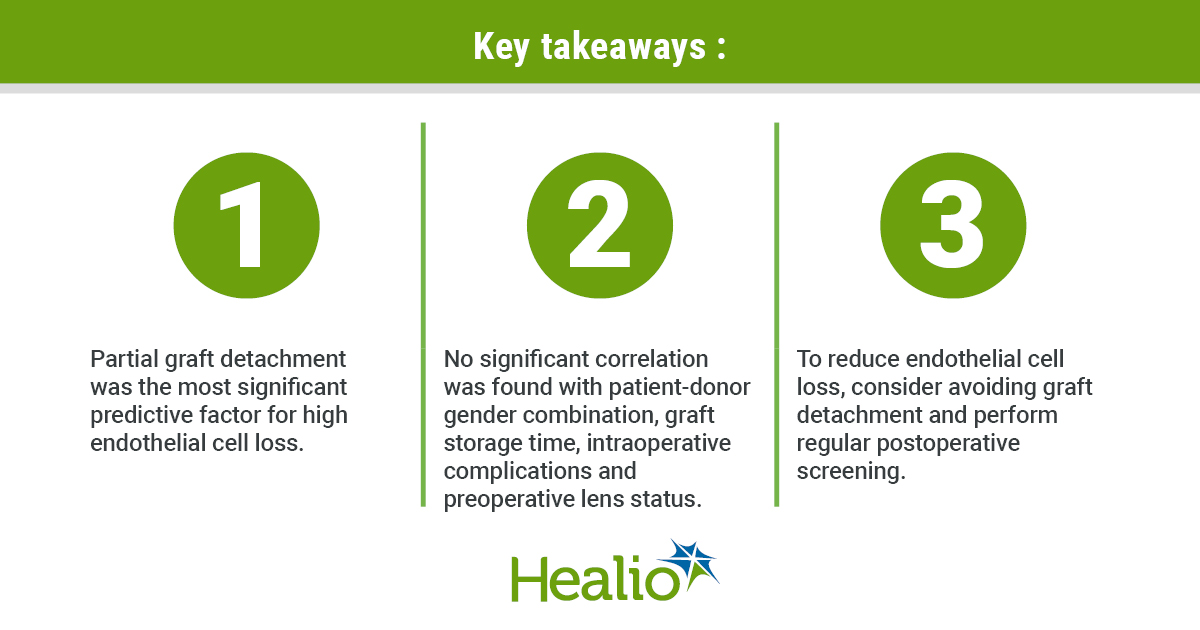Study looks at predictors of high endothelial cell loss after DMEK

MARRAKECH, Morocco — Several factors, including graft detachment and disease severity, may be predictors of a higher and faster rate of endothelial cell loss after Descemet’s membrane endothelial keratoplasty for Fuchs’ dystrophy, according to a study carried out at the Netherlands Institute for Innovative Ocular Surgery.
“We all know that in DMEK we have, on average, an early cell decrease of 30% to 40% within 6 months, followed by a stable annual cell loss of 7% to 10%. However, by looking at our cases, we observed a large variability, from eyes with hardly any cell loss to eyes with more than 50% cell loss,” Lamis Baydoun, MD, said at the European Society of Cataract and Refractive Surgeons Winter Meeting.
A study was set up to evaluate which parameters relate to endothelial cell loss. A group of 351 eyes of 275 patients who had DMEK surgery for Fuchs’ dystrophy was retrospectively analyzed for cell loss over a period of 4 years. High interpatient variability was seen over the consecutive time points of the follow-up, and subgroups were formed based on these findings.
“Cell loss was higher, faster and more consistent in the long term in some groups,” Baydoun said.

Regression analysis showed that partial graft detachment was the most significant predictive factor for high cell loss. Other parameters were donor death causes, stage of Fuchs’ dystrophy and postoperative complications other than graft detachment, including IOP elevation. No significant correlation was found with patient-donor gender combination, graft storage time, intraoperative complications and preoperative lens status.
“To reduce the risk of EC loss, we should consider avoiding graft detachment and perform regular postoperative screening to detect as early as possible complications that may cause cell loss. We might also consider early intervention before reaching the advanced stages of Fuchs’,” Baydoun said.
Other parameters that were not included in this study might be worth investigating, such as donor cell viability, donor diabetes and aqueous humor composition, she said. – by Michela Cimberle
Reference:
Baydoun L, et al. Parameters associated with endothelial cell density variability after Descemet membrane endothelial keratoplasty. Presented at: European Society of Cataract and Refractive Surgeons Winter Meeting; Feb. 21-23, 2020; Marrakech, Morocco.
Disclosure: Baydoun reports no relevant financial disclosures.










